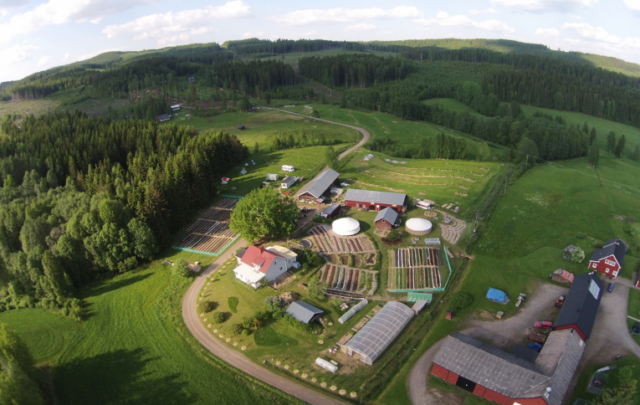
A new generation of Chinese architects is working against mass development projects, in and together with the countryside. They are boosting the revalorization of China’s built cultural landscape.
Mass housing estates trimmed with French-style plastic windowsills and Greek-style concrete pillars, cities sprouting up overnight, some still half empty, in addition to a considerable hotchpotch of international star architecture, a Frank Gehry here and a Zaha Hadid there: the building boom remains unabated in China.
As of the reforms launched by Deng Xiaoping (邓小平) in the late 1970s and early 1980s, a predominantly rural population living in collectively run villages has been driven into the cities. China’s central government aims to increase the urbanization rate even further, from 50 per cent today (2011) to 70 per cent in 2030. About 350 million Chinese are to be urbanized by 2025, equalling 40 million more than the entire population of the United States as per 2012.
Displace or replace
In this frenzy of economic growth and modernization, rural villages in China are being built over, displaced or wholly replaced by entire cities. Efforts to preserve and promote local architectural culture and traditions generally take a back seat to the objectives of rampant modernization. As a result of the Hukou Act (户口), a law that, among other things, is to separate the country’s urban from its rural populations, the traditional relationship between the city and countryside is increasingly undermined in the wake of growth. What is left behind is a landscape in which urban and rural prerogatives clash.
The intended clear-cut distinction between city and country in effect no longer exists: on the contrary, international factories border on fishponds, villages have been built over by infrastructure projects, and residential mega-high-rises and fenced-in golf courses are now located next to rice paddies. Half-finished five-storey one-family houses in the middle of abandoned rice paddies lie waiting for their owners to return from the city.
Quest for contemporary alternatives
More and more young architects in China are taking a critical look at this urbanization of the countryside and what has become of China’s architectural culture. They call for a responsive development approach adapted to the local context. In their quest for contemporary alternatives, they are actually returning to traditional construction techniques and materials whilst getting residents involved in the building process, thereby expanding and enriching conventional architecture practice.
Under the auspices of the University of Hong Kong, the Rural Urban Framework, or Rufwork for short, was formed in 2006: a group of architects equally committed to addressing these issues. Founded by John Lin (林君翰) and Joshua Bolchover, this non-profit organization works mainly with community associations and with the authorities in rural areas of China.
The university is making possible these endeavours at the interface between research and praxis, integrating architecture students along with young architects. Unconstrained by profit-making considerations, they develop theoretical and practical ideas and projects for the Chinese countryside.

Mulan School, courtyard house prototype, Guangdong: built from discarded building material. © Rufwork
How to have some impact
What triggered the formation of Rufwork was an eight-hour trip to the village of Qinmo (琴模) in Guangdong Province. A bunch of architects drove from Hong Kong through Shenzhen and then into the Pearl River Delta, all the way out to some very remote villages on the border between Guangdong and Guangxi. As they travelled from urban to rural agglomerations and saw landscapes in the throes of urbanization, they wondered how they might have some impact on this transformative process, which is proceeding by and large without architects and architecture.
For nine years now Rufwork has been involved in the development of a total of more than 18 villages. Depending on their location, China’s villages have been affected by the rampant urbanization in widely varying manners. Some are now completely enclosed in a dense urban fabric; in the wake of a city’s growth, they have given their fields up to developers or simply found themselves cut off from the fields by large-scale infrastructure projects. Other villages are dissolving entirely, their apartment buildings deserted, traditional ancestral shrines crumbling from neglect. In some cases, the young generation has fled to the cities, leaving children and old people behind in the village, thereby eroding traditional social and family structures.
Contemporary architecture: architecture adapted to specific needs
Rufwork undertake small-scale architectural interventions in response to each village’s specific needs. In Qinmo, for example, the organization built a new school and renovated a traditional courtyard house. The latter has now become the social centre of the village and, together with Hong Kong’s Kadoori Farm, villagers are developing alternative farming methods in the courtyard of the building. Over in Shijia (石家), Rufwork built a modern village house, fitting a traditional mud-walled courtyard house out with a modern sustainable water and biogas supply. In Tongjiang (桐江) and Mulan (木兰) new schools have been built out of recycled construction waste, and in Lingzidi (岭子底) and Taiping (太平), villages have regained access to their fields by renovating old bridges and building new ones.
In each of these projects, Rufwork strive on the one hand to develop a contemporary architectural language using the limited means at their disposal. On the other hand, these projects are about adapting architecture to the needs of each village struggling to cope with unbridled urbanization. In addition to boosting appreciation for local building traditions, their efforts are fostering sustainable approaches to rural development in China. Rufwork are, in a word, blazing trails for alternative approaches to China’s cultural landscape.





